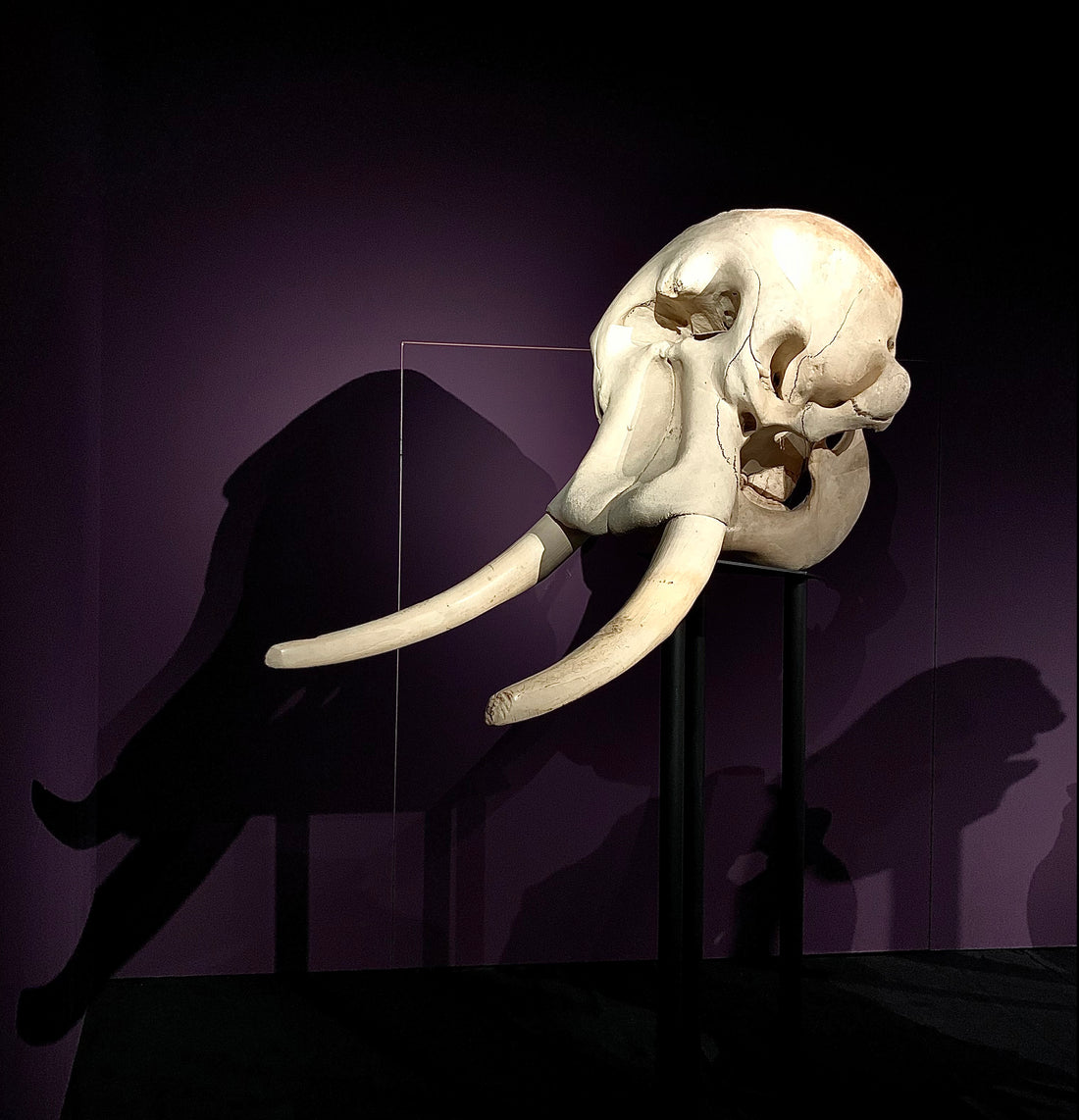
Den ulovlige handelen med elfenben fra dyr og hvorfor det er viktig
Dele
Hvorfor er elefanter en truet art?
Jeg var heldig å besøke nye Humboldt Forum i Berlin , som har åpnet dørene i sommer, med kultur- og vitenskapsutstillinger som vil pleie dine verdensperspektiver.
En av utstillingene jeg besøkte ligger mitt hjerte veldig nært:
Forferdelig skjønnhet: Elefant - Mennesker - Elfenben
Den tumultariske historien om menneskets forhold og fascinasjon til elfenben og hvordan denne besettelse nesten har utryddet elefanter, neshorn og andre pattedyr fra jorden.
Med en kraftig visning av gjenstander, bilder, lyduttalelser og lydinstallasjoner, vil den bringe deg til å se den profane effekten av den skruppelløse jakten på å få tak i elfenbenet fra ville dyr og konsekvensene det har for villlivet og menneskene på kryss og tvers mellom denne ulovlige trafikken .

•Bilder som dokumenterer handelen med dyreelfenben gjennom århundrer•

Fortalt fra forskjellige tidsperioder, lærte vi om den tidlige bruken og den grusomme skaffelsen av dyreelfenben.
I nåtiden og selv med globale lover som forbyr kommersialisering av dyreelfenben, søkes det fortsatt etter det mange mente er dets ubegrunnede medisinske egenskaper, for å bli brukt som et håndverk og luksusmateriale og til og med som et troféstykke fra morderiske jakter.
Fjerning av støttenner i et pattedyr resulterer nesten alltid i at dyret dør og at hele dyrelivspopulasjoner blir ubalansert. Gjør elefanter til et av de mest truede dyrene på planeten vår.


•Utstilling av elefantbronner og hodeskaller fra truede pattedyr•
Utdanning, nøkkelen til bevaring
Utstillingen søker å utdanne besøkende i bevaring av den naturlige verden, og presenterer alternativer til bruk av dyreelfenben.
Tagua Nut, også kjent som Vegetable Ivory, er blant et av de få alternative materialene som vises i utstillingen, som kan minne om den unike egenskapen og kvaliteten som gjør dyreelfenben så ettertraktet.
Tagua Nut etterligner ikke bare teksturen og konsistensen til elfenben, men den er også tilgjengelig i store mengder. En økologisk og vegansk ressurs som kan dyrkes bærekraftig.
•Tagua-nøtter vist på utstillingen•
•Tagua -nøtter fra skall til perle•
Lurer du på hva tagua-nøtten er?
Tagua-nøtter (også kjent som vegetabilsk elfenben) er signaturmaterialet i vår bærekraftige smykkeserie.
De er frøene fra palmetrær i Phytelephas- slekten. Tørkede t agua nøtter har en veldig hard og tett konsistens med en hvit finmarmorert kornstruktur og kan farges med naturlige fargestoffer.
Våre organiske tagua-nøttesmykker har en organisk levetid: fra tagua-nøttepalmen til tagua-nøtteperlene som er laget av våre ringer, armbånd, øredobber og halskjeder. Produktene våre vil naturlig brytes ned som tre eller frø når de nådde slutten av livet over tiår.
•Botanisk tegning av Phytelephas / Tagua Nut•
Vi lager elegante og tidløse design som vil passe den moderne kvinnestilen så vel som hennes bærekraftige verdier.
Klikk her og bli inspirert med vårt utvalg av håndlagde, veganske vennlige og grusomhetsfrie taguanøttersmykker.
................................................................ ...................................
Vi kan alle bidra til vern av dyrelivet
Vi kan føle at det er en uhyggelig og umulig oppgave å redde truede arter på egen hånd eller stoppe oppvarmingen av planeten vår, men selv de minste bevegelsene har innvirkning, og her er hvordan våre egne handlinger kan hjelpe:
- Bekjemp det ønskelige med dyreelfenben.
- Avvis alle produkter fra dyrelivskilder.
- Ikke del, lik eller promoter innhold som oppmuntrer til forbruk av truede dyr
- støtte og donere til organisasjoner/veldedighet/merker som oppmuntrer til bevaring av natur og dyreliv rundt om i verden.

•Ulovlige elefantstøttenner blir brent etter å ha blitt beslaglagt•
................................................................ ...................................
...Og for å avslutte, la meg dele noen morsomme fakta om elefanter:
- Elefantører fungerer som vifter for å kjøle dem ned i den brennende afrikanske varmen
- En elefants hud er 2,5 cm tykk de fleste steder. Dette hjelper dem å holde på vannet og holde seg kjølige i varmen.
- Elefantens snabel kan inneholde opptil 8 liter vann på en gang.
Elefanter glemmer aldri, tinninglappen deres er større enn menneskers.
- De kan høre gjennom føttene ved å oppdage seismiske vibrasjoner på bakken.
- De er ekstremt emosjonelle skapninger - elefanter sørger til og med tapte familiemedlemmer.
- De "klemmer" kofferten for å hilse på hverandre.
Er ikke elefant bare fascinerende og altfor søtt?
La oss beskytte dem




•Bilder Instagram•
................................................................ ...................................
Del gjerne dette innlegget og legg igjen kommentarer og tanker nedenfor.






